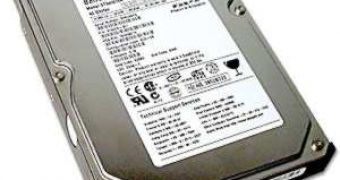According to researchers working at a joined project of the University of California and Hitachi Global Storage Technologies, cited by ITPro, most hard disk drive failures are produced by phenomena called "magnetic avalanches" and their better understanding could lead to hard disk drives that are much more stable and resilient.
Magnetic avalanches occur when the drives's magnetic head hovers over a patch of the disk surface, causing that patch to change polarity (alignment or spin). Because the patch's polarity may change in a random way and because all changes occur as a sequence of large and small jumps that behave like a magnetic explosion, entire sections of the affected hard disk drive may lose data. Research was carried by Joshua Deutsch, professor of physics at the University of California, Santa Cruz, and Andreas Berger, who did the research while at Hitachi Global Storage Technologies.
"The big advance in this paper (published in the Physical Review Letters) is that in previous models of avalanches, the spin just flips from up to down as soon as they apply a magnetic field, and they're done. But that's not the way spin behaves in the real world," Deutsch said. However, scientists said that this a simplified model and magnetic avalanches are much more complex and while the current model is an improvement over the previous one (that overlooked the effect called "spin precession") it is far from perfect. To better explain magnetic avalanches, researcher said that each bit on the hard drive surface is like a "tiny pincushion bristling with individual magnetic fields" and as the drive's head approaches, each pin wobbles in a widening circle before settling on its own polarity. They called that wobbling "precession".
"It takes around a few nanoseconds for a precession to die down," said Deutsch. "That's not that fast compared to computers today. It's not as fast as the timescale you get for a transistor to switch." During that brief time, each magnetic field contributes forces that affect the precession of neighboring fields and the combined forces of all these wobbles adds up to a lot of energy that changes the polarity of near-by bits, causing the drive to lose data.

 14 DAY TRIAL //
14 DAY TRIAL //